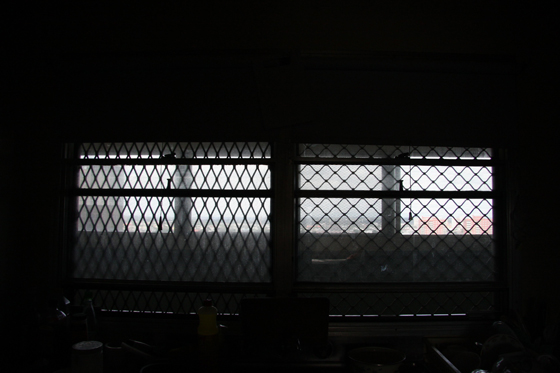
This article is a part of our August focus on Homelessness in Australia – you can access more content from this issue here.
By Jessica Szwarcbord
They may not seem to be related, but family violence and homelessness are intimately connected. So intimately connected that the success of the Federal and Victorian governments’ aim to reduce homelessness will largely depend on reducing family violence.
A woman flees her home, escaping from a violent relationship. She may take children or leave alone. This basic backstory belongs to many women, and it is a common narrative. Shelter options may include a friend’s couch, crisis accommodation or a refuge. Stable accommodation can be difficult to find.
When we talk about homelessness we talk about home, not just shelter or housing and so even if these women find shelter, their accommodation may not be home. Finding crisis accommodation that is suitable for children can be especially difficult, making a terrible experience even more stressful. According to the Australian Institute of Housing and Welfare 64 per cent of individuals with children were turned away from homelessness services in 2011.
These women may not sleep under a bridge, as per clichéd perceptions, but they are nonetheless homeless, and are at great emotional, psychological, physical and financial risk.
It is extremely difficult to calculate how many of these women there are, as a variety of factors can make them statistically invisible and physically difficult to find. Homelessness Australia focused on this issue during Homeless Persons’ Week earlier this month, recognising these women among many “hidden homeless”.
Homelessness Australia suggests that to help reduce homelessness we need to reduce family violence. This is true, but we also need to recognise the highly complex and diverse nature of the connection between family violence and homelessness, going beyond the familiar narrative.
The majority of victims in the family violence context have been, and still are, women; many argue that this reflects a cultural history and gender power imbalance. Yet a different, converse gender imbalance arises out of homelessness in the family violence context. For example, the way that Victorian Government policy, reflected in legislation, responds to family violence, by permitting the removal of men from their homes, contributes to the gendered nature of the homelessness experience, not because women cannot be removed if they are committing family violence, but because the majority to be removed are male.
The policy of removing people who commit family violence is not problematic in and of itself, as it is important to protect victims of family violence; the problem lies in the experiences that follow a man’s initial removal from the home. While there is a tendency to view male and female narratives as separate, it is important to understand men’s stories, and how the narrative can be different for men, as their resolution may also help the women and children associated with the homeless man.
To illustrate, I will tell a story: an amalgamation of examples given to me by various professionals who work with people experiencing homelessness.
A couple, let’s call them Jenny and Fred, live together with their two children. Fred has become aggressive and regularly hits Jenny so eventually she calls the police. From there the process is fairly straightforward: the police arrive and if possible they will remove the man from the home under a family violence safety notice. If Fred has nowhere to go he can be put up in a motel for a couple of nights, but after this he enters the general population of single males seeking accommodation – if middle-aged, he is in one of the groups that has the most difficulty finding on-going accommodation and support (and with further budget cuts possibly pending for agencies like Homeground, housing this demographic is going to become even more difficult). The police will take this matter to the Magistrates Court for an intervention order hearing and the Court has the power, under the Family Violence Protection Act 2008 (Vic) to exclude Fred from the home. There is no requirement that the Court consider where he is to live, unless Fred is under eighteen years old.
The next chapter of the story finds Fred alone and struggling to find accommodation. He misses Jenny, he misses their children, and he misses home. So despite an intervention order Fred returns home and Jenny, because she still cares about him, lets him return and the violence recommences. This is not just a terrible experience for Jenny, it is also damaging for their children, who may be exposed to the violence. It is damaging for Fred as he continues being violent, and he is not getting the support he needs to change his behaviour. Yet, when Jenny calls the police and Fred is again excluded from the home, she may feel guilty because Fred still finds it difficult to find accommodation and there may be criminal repercussions due to Fred’s intervention order breach.
Had Fred been able to find accommodation more quickly he may not have come knocking on Jenny’s door, and if he had come knocking, if there were accommodation available to him, Jenny may have found it easier to refuse him. She may have let him in irrespective, but the point is that homelessness came about as a consequence of family violence, and family violence continued in part, because of homelessness.
The difficulty is that family violence (and homelessness resulting from family violence) is a murky area fraught with high emotion, a lack of information and research, and a statistical void as many (woman in particular) will not report that they are homeless or in a family violence situation. Recent attention to family violence in the media alone indicates that this is a huge socio-cultural issue, bigger than those who were aware of it may have anticipated. Homelessness, on the other hand, does not get so much attention, the connection between the two receives even less.
The Victorian policy on family violence states that women and children have the right to a safety and justice, as does everyone. The National Council to Reduce Violence Against Women and their Children has a human rights based approach to family violence. The Family Violence Protection Act 2008 (Vic)’s purpose expresses this background.
We also have a right to adequate housing and shelter, which is articulated in Article 25 of the Universal Declaration of Human Rights, amongst other instruments. Here lies the problem: without adequate support for the homeless, if we protect one human right – the safety of those who are at risk of family violence – we may be contravening another human right, being the right to a home. We cannot protect Jenny and her children and ignore Fred.
Conflict between rights may be an issue that society will always face. However, in this case, we do not need to sacrifice one right for another. If we provide adequate support for the homeless, with a specific awareness of how family violence contributes to homelessness and to how removing people from the home, a short-term solution, may increase homelessness, we may also help to reduce family violence. Vice versa, if we reduce family violence we will also reduce homelessness
Ultimately, if we recognise the connection between family violence and homelessness, as well as all the different ways that a person may become homeless in this context, maybe we will do a better job at reducing both.
Jessica Szwarcbord has a Bachelor of Arts and is currently completing her Bachelor of Laws at Monash University. She is also a volunteer at the Collingwood Neighbourhood Justice Centre. Her general interests include story-telling, visual arts, literature, law and philosophy.


